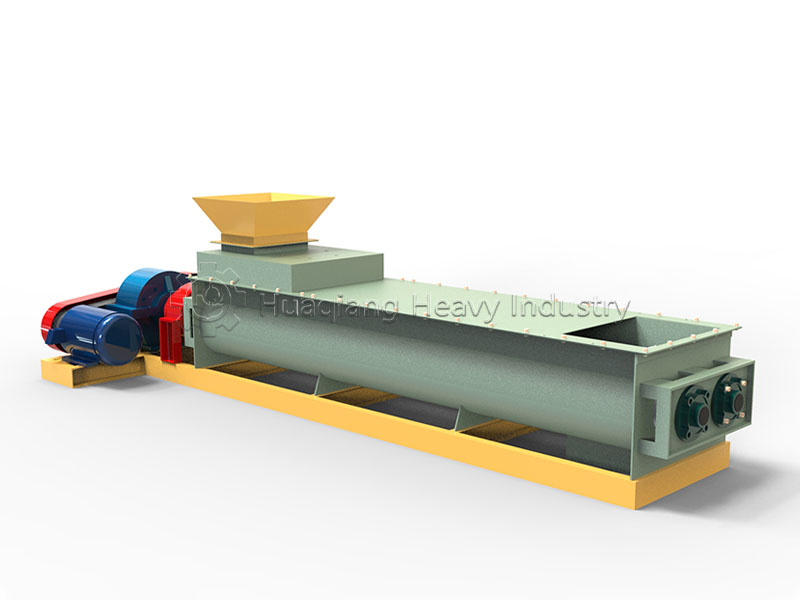Double axis Mixer: The “Golden Blender” of NPK Fertilizer?
In the NPK compound fertilizer production chain, the double axis mixer, like a skilled “golden blender,” silently shouldered the crucial task of uniformly mixing raw materials. The nutrient accuracy of NPK fertilizer directly impacts crop growth. With two counter-rotating mixing shafts and staggered mixing blades, the twin-shaft mixer can quickly blend and stir raw materials of varying properties, such as urea, monoammonium phosphate, and potassium chloride, into a uniform mixture, eliminating nutrient gaps and laying a perfect foundation for subsequent granulation.
This NPK fertilizer production line relies on the coordinated efforts of multiple devices. Before the double axis mixer enters the production line, the raw material crusher crushes the lumpy phosphate rock and potash fertilizer granules, refining the raw materials to a particle size that meets the mixing standards. Next, the batching scale, like a rigorous “measurer,” accurately weighs the amount of each raw material according to the preset nitrogen, phosphorus, and potassium ratios to ensure the exact nutrient ratio. When the double axis mixer completes mixing, the fertilizer granulator takes over, squeezing and rolling the uniform mixture into granules of uniform size. Finally, the drum fertilizer dryer and cooler work in sequence.
The dryer removes excess moisture from the pellets, the cooler cools the pellets to room temperature to prevent clumping, and the screener removes unqualified pellets for reprocessing to ensure the quality of the finished product.
The advantages of the double axis mixer are particularly prominent in this production line: its mixing efficiency is 30% higher than that of conventional mixers, and its mixing uniformity exceeds 95%. It can also adjust the speed to suit different raw material characteristics, reducing both material waste and energy consumption. Fertilizer plants around the world now rely on this production line to produce NPK fertilizers tailored to the needs of various crops.
